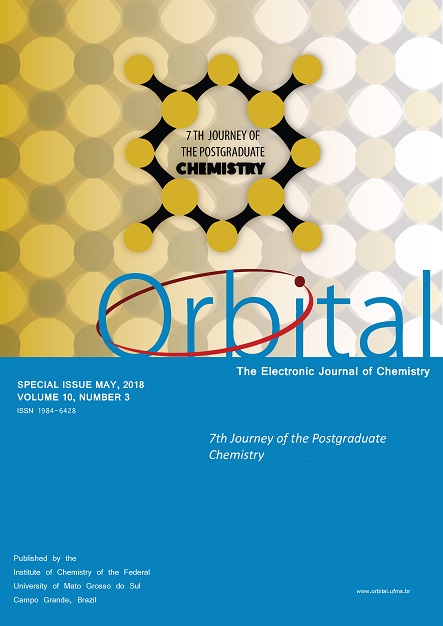- alginate,
- hydrogel,
- microspheres,
- nitrogen fertilizer,
- calcium
- zinc,
- crosslink ...More
Copyright (c) 2018 Orbital: The Electronic Journal of Chemistry

This work is licensed under a Creative Commons Attribution-NonCommercial-NoDerivatives 4.0 International License.
Abstract
The work evaluated the difference of nitrogen retention in sodium alginate hydrogel microspheres with 50% of nitrogen, to allow the production of controlled release fertilizers. The crosslinking with the calcium and zinc ions occurs in a differentiated way, and it is emphasized that zinc binds more slowly and covalently. After the spheres were elaborated, a leaching test was performed to simulate the release of nitrogen by soil moisture. In this case, the zinc nitrate-reticulated beads showed a lower loss of the nitrogen content compared to calcium, with values of 6.7129% of nitrogen for zinc nitrate, corresponding to about 50% of the initial value, and 43.6345 % of nitrogen for calcium chloride corresponding to about 90% of the initial value. The characterization of the samples was performed by fourier transformed infrared (FTIR) analysis, and characteristic calcium and zinc alginate compounds were observed, in the same way as the connections caused by nitrogen. It can be defined that the zinc-crosslinked alginate obtained a lower swelling capacity and higher retention of nitrogen than with calcium chloride, being an alternative for the preparation of slow-release fertilizer.


